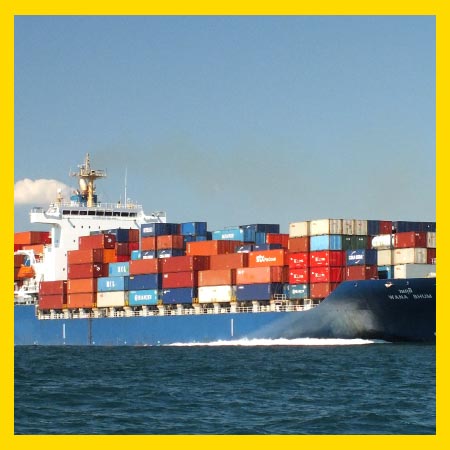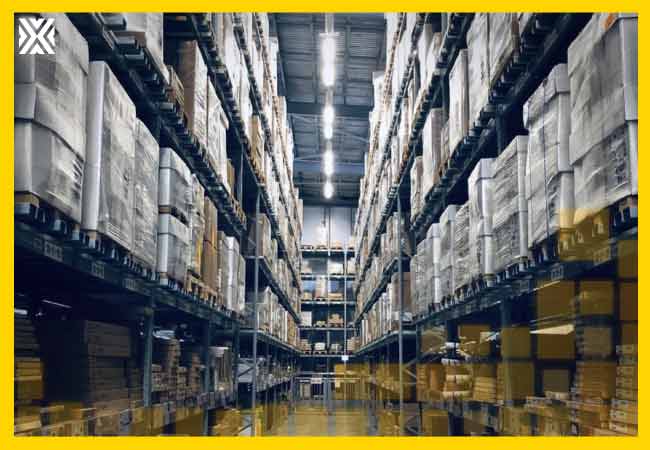Currency
August 30, 2020

The shipping and trucking industry has had to work within unique OSHA standards for years. As the COVID-19 pandemic continues, logistics companies will have to adapt to new, changing regulations. Not everything is a matter of law, and some guidelines may be unclear, so this isn't always a straightforward task.
Keeping employees and customers safe is essential at any time, but the pandemic brings new concerns. The global economy relies on shipping, but if transportation companies aren't careful, they can contribute to the spread of COVID-19. Here are a few examples of new safety protocols the industry should embrace:
The shipping industry involves a lot of face-to-face interaction, so companies can't afford to take chances in a pandemic. If any employees are feeling sick or have come into contact with someone who's tested positive, they need to report it. That way, managers can schedule them to quarantine for the appropriate amount of time or get tested as soon as possible.
The Chamber of Marine Commerce requires immediate reporting to the Coast Guard for any illness on a vessel. Even if local authorities in an area don't have similar requirements, it's best to alert anyone who the situation might affect.

Logistics companies can be reasonably sure of the health of their drivers and other employees. Customers and partners, on the other hand, present another set of risks. Since businesses can't guarantee that others are healthy, they should keep outside contact to a minimum.
Shipping companies can use real-time text updates to alert customers of incoming packages, then leave them on the doorstep. Workers who have to interact with others at docks or airports should maintain a 6-foot distance. COVID-19 may be able to survive on surfaces, so workers may want to wear gloves if they need to touch any common surface.
If a driver starts feeling sick on the road, it can present a unique challenge. Businesses may have to reorganize their routes on the fly to allow the ill worker to finish faster and quarantine. Given these new obstacles, the trucking industry will have to become more flexible.
Many state and federal regulations for drivers are relaxing, such as employees being able to work longer hours. These loosening restrictions can help companies make up for unforeseen circumstances. To make the most of these relaxed OSHA standards, businesses will need to plan to be flexible if necessary.
According to the CDC, it may be possible to contract COVID-19 from touching an infected surface and then touching an orifice. While this isn't the primary way the virus spreads, it's still worth considering. Any workers handling packages or using shared spaces like company vehicles should disinfect all surfaces.
The EPA keeps a list of anti-COVID disinfectants employees can use. Workers should use gloves and disinfect surfaces any time they are done touching an item before someone else might. Afterward, they should put on a new pair of gloves to avoid cross-contamination.
If an employee does test positive for COVID-19, contact tracing is essential. Companies should keep logs of when, where and with whom employees work to enable this if necessary. These records will make contact tracing a much faster and more straightforward process.
Without accurate, up-to-date logs, it could be near impossible to determine who might be at risk. Proactive record keeping ensures businesses can control these health hazards as soon as possible.
The trucking and shipping industries involve a lot of workers and customers, which can be risky during a pandemic. By adhering to updated OSHA standards and following these protocols, though, these companies can stay safe. The world can't survive without logistics businesses, so they should do everything in their power to stay healthy.
Keeping employees and customers safe is essential at any time, but the pandemic brings new concerns. The global economy relies on shipping, but if transportation companies aren't careful, they can contribute to the spread of COVID-19. Here are a few examples of new safety protocols the industry should embrace:
1. Report All Potential Health Concerns
The shipping industry involves a lot of face-to-face interaction, so companies can't afford to take chances in a pandemic. If any employees are feeling sick or have come into contact with someone who's tested positive, they need to report it. That way, managers can schedule them to quarantine for the appropriate amount of time or get tested as soon as possible.
The Chamber of Marine Commerce requires immediate reporting to the Coast Guard for any illness on a vessel. Even if local authorities in an area don't have similar requirements, it's best to alert anyone who the situation might affect.

2. Minimize Contact Between Drivers and Customers
Logistics companies can be reasonably sure of the health of their drivers and other employees. Customers and partners, on the other hand, present another set of risks. Since businesses can't guarantee that others are healthy, they should keep outside contact to a minimum.
Shipping companies can use real-time text updates to alert customers of incoming packages, then leave them on the doorstep. Workers who have to interact with others at docks or airports should maintain a 6-foot distance. COVID-19 may be able to survive on surfaces, so workers may want to wear gloves if they need to touch any common surface.
3. Plan for Flexibility
If a driver starts feeling sick on the road, it can present a unique challenge. Businesses may have to reorganize their routes on the fly to allow the ill worker to finish faster and quarantine. Given these new obstacles, the trucking industry will have to become more flexible.
Many state and federal regulations for drivers are relaxing, such as employees being able to work longer hours. These loosening restrictions can help companies make up for unforeseen circumstances. To make the most of these relaxed OSHA standards, businesses will need to plan to be flexible if necessary.
4. Regularly Disinfect Vehicles and Packages
According to the CDC, it may be possible to contract COVID-19 from touching an infected surface and then touching an orifice. While this isn't the primary way the virus spreads, it's still worth considering. Any workers handling packages or using shared spaces like company vehicles should disinfect all surfaces.
The EPA keeps a list of anti-COVID disinfectants employees can use. Workers should use gloves and disinfect surfaces any time they are done touching an item before someone else might. Afterward, they should put on a new pair of gloves to avoid cross-contamination.
5. Keep Up-To-Date Logs
If an employee does test positive for COVID-19, contact tracing is essential. Companies should keep logs of when, where and with whom employees work to enable this if necessary. These records will make contact tracing a much faster and more straightforward process.
Without accurate, up-to-date logs, it could be near impossible to determine who might be at risk. Proactive record keeping ensures businesses can control these health hazards as soon as possible.
The Industry Must Adapt Amid COVID-19
The trucking and shipping industries involve a lot of workers and customers, which can be risky during a pandemic. By adhering to updated OSHA standards and following these protocols, though, these companies can stay safe. The world can't survive without logistics businesses, so they should do everything in their power to stay healthy.









